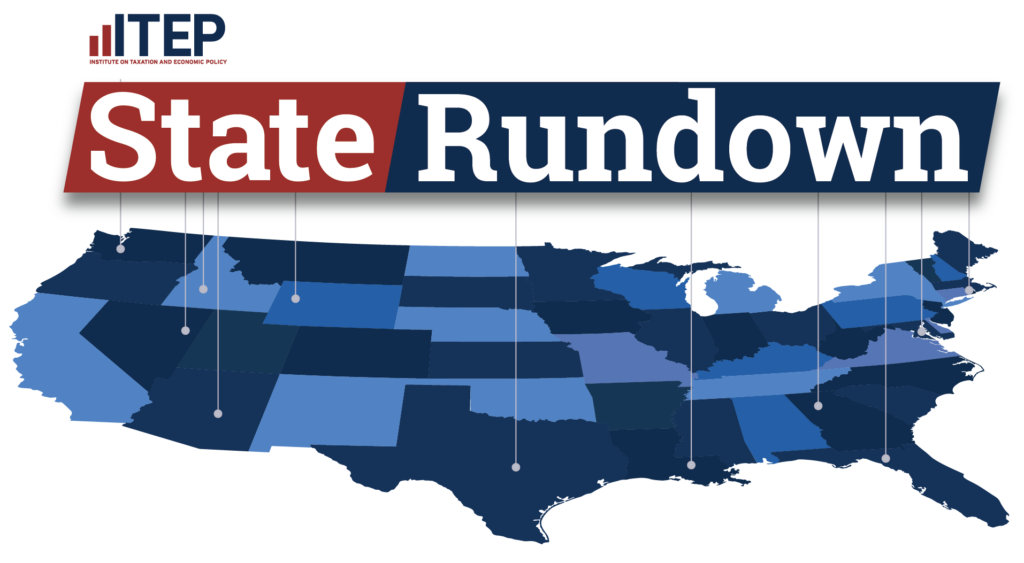Read this Policy Brief in PDF Form
The fundamental purpose of taxation is to raise the revenue necessary to fund public services. While there are many ways to achieve this goal, a widely agreed-upon set of principles should be used to evaluate tax systems. This policy brief provides a basic overview of five commonly cited principles of sound tax policy: equity, adequacy, simplicity, exportability, and neutrality.
Equity: Two Kinds of Tax Fairness
When people discuss tax “fairness,” they’re talking about equity. Tax equity can be looked at in two important ways: vertical equity and horizontal equity.
Vertical equity addresses how a tax affects different families from the bottom of the income spectrum to the top—from poor to rich. Three terms are used in measuring vertical equity:
■ Regressive tax systems require that low- and middle-income families pay a higher share of their income in taxes than upper-income families. Sales taxes, excise taxes and property taxes tend to be regressive.
■ Proportional or flat tax systems take the same share of income from all families.
■ Progressive tax systems require upper-income families to pay a larger share of their incomes in taxes than those with lower incomes. Personal income taxes are usually progressive.
Horizontal equity is a measure of whether taxpayers with similar circumstances in terms of income, family structures, and age pay similar amounts of tax. For example, if one family pays much higher taxes than a similar family next door, that violates “horizontal” fairness. This sort of unjustified disparity undermines the public support for the tax system and diminishes people’s willingness to file honest tax returns. It would be hard to defend a tax system that intentionally taxed left-handed people at higher rates than right-handed people. Likewise, a tax that hits a wage-earner harder than an investor (as the federal income tax currently does), even if their total incomes are the same, fails the test of horizontal equity.
Most people accept the notion that- at a minimum- tax systems should not be regressive. Almost every state relies on some combination of regressive, proportional and progressive taxes. When you add these taxes together, the overall progressivity or regressivity of a tax system is determined by (1) the degree of progressivity or regressivity of each tax within the system and (2) how heavily a state relies on each tax. Thus, a state that relies on regressive sales, excise and property taxes more heavily than a progressive income tax will end up with a very regressive tax system overall.
Adequacy
An adequate tax system raises enough funds to sustain the level of public services demanded by citizens and policymakers. At the end of the day, adequacy is what separates successful tax systems from unsuccessful tax systems. Of course, at any given time, the primary concern for state lawmakers is short-term adequacy – making sure there’s enough revenue to fund public services in the upcoming fiscal year. But it’s equally vital for good government advocates and lawmakers to seek strategies that will achieve long-term adequacy, balancing budgets not just this year and next, but five years and ten years down the road.
Two factors that contribute to the adequacy of a tax are its stability and elasticity. A stable tax is one that grows at a predictable pace. Predictable growth makes it easier for lawmakers to put together budgets that match anticipated revenues to spending. But stability is not enough to achieve adequacy in the long run. For example, property taxes grow predictably—but tend to grow more slowly than the cost of the services that governments provide. Elasticity is a measure of whether the growth in tax revenues keeps up with the economy—an important consideration because the cost of providing public services usually grows at least as fast as the economy. An elastic tax system is one that grows faster than the economy during good times, and falls faster than the economy during bad times. Over the course of the business cycle, elastic taxes like the personal income tax help to ensure adequate revenue streams.
Simplicity
Simplicity is often touted as a goal for tax reform – and it’s an important one. Complicated tax rules make the tax system difficult for citizens to understand. Complexity also makes it harder for governments to monitor and enforce tax collections, and makes it easier for lawmakers to enact (and conceal) targeted tax breaks benefitting particular groups. A tax system full of loopholes gives those who can afford clever accountants an advantage over those who must wade through the tax code on their own.
But beware. Tax reform proposals described as “simplification” measures are often nothing of the kind. Anti-tax advocates frequently seek to “simplify” the income tax by eliminating the graduated rate structure and instituting a flat-rate tax. This is a red herring: a graduated tax system is no more complicated than a flat-rate tax. What makes filing taxes more complicated – and makes the tax forms longer and longer each year – is the proliferation of special tax breaks. The right way to make income taxes simple is to eliminate tax loopholes, not to flatten the rates.
Exportability
The public services provided by state and local tax revenues are enjoyed by individuals from other states—including businesses that hire a state’s high school and college graduates and tourists who use a state’s transportation infrastructure. This is why state tax systems are often designed to make multi-state businesses and residents of other states pay their fair share of the state’s taxes. An exportable tax is one that is at least partially paid by these non-residents.
There are broadly three ways in which taxes can be exported: directly (sales taxes on items purchased by tourists, for example); by levying taxes on businesses which are then passed on to non-residents; and through interaction with the federal income tax. All taxes are at least partially paid by non residents—and policy makers have the power to effectively adjust the percentage of taxes “exported” to residents of other states.
Neutrality
The principle of neutrality (sometimes called “efficiency”) tells us that a tax system should stay out of the way of economic decisions. Tax policies that systematically favor one kind of economic activity or another can lead to the misallocation of resources, or worse, to schemes whose sole aim is to exploit such preferential tax treatment. If individuals or businesses make their investment or spending decisions based on the tax code rather than basing them on their own preferences, that’s a violation of the neutrality principle, and can lead to negative economic consequences in the long run. State and local governments should not use tax policy to create “winners and losers” by promoting one sector of the economy ahead of another or by favoring one type of income over another.
Conclusion
The tax principles outlined here are not the only criteria used by policymakers in enacting tax changes— and these principles can come into conflict with each other. But almost everyone would agree that advocates of tax reform should keep each of these principles in mind as they seek to improve their state’s tax system.




